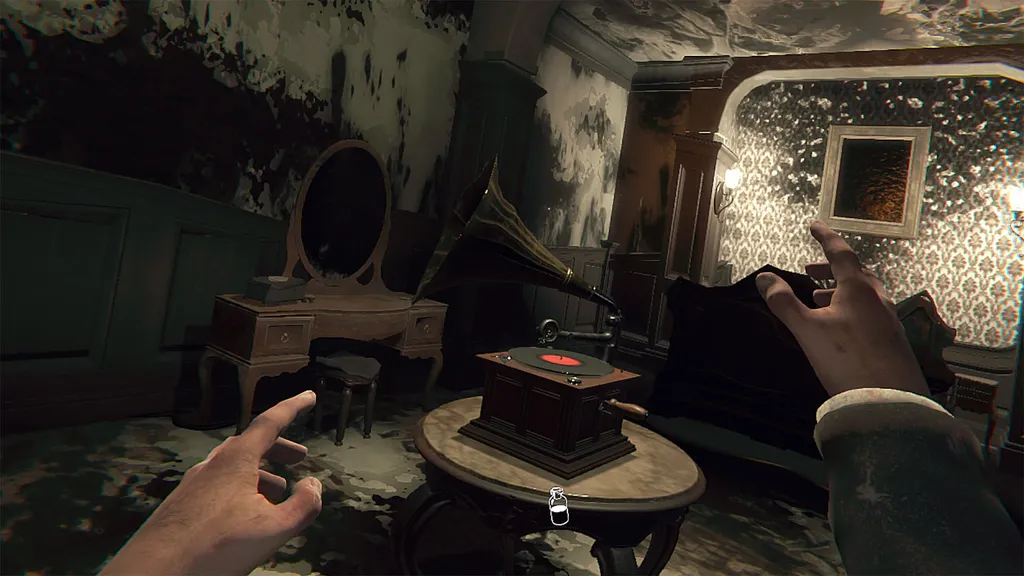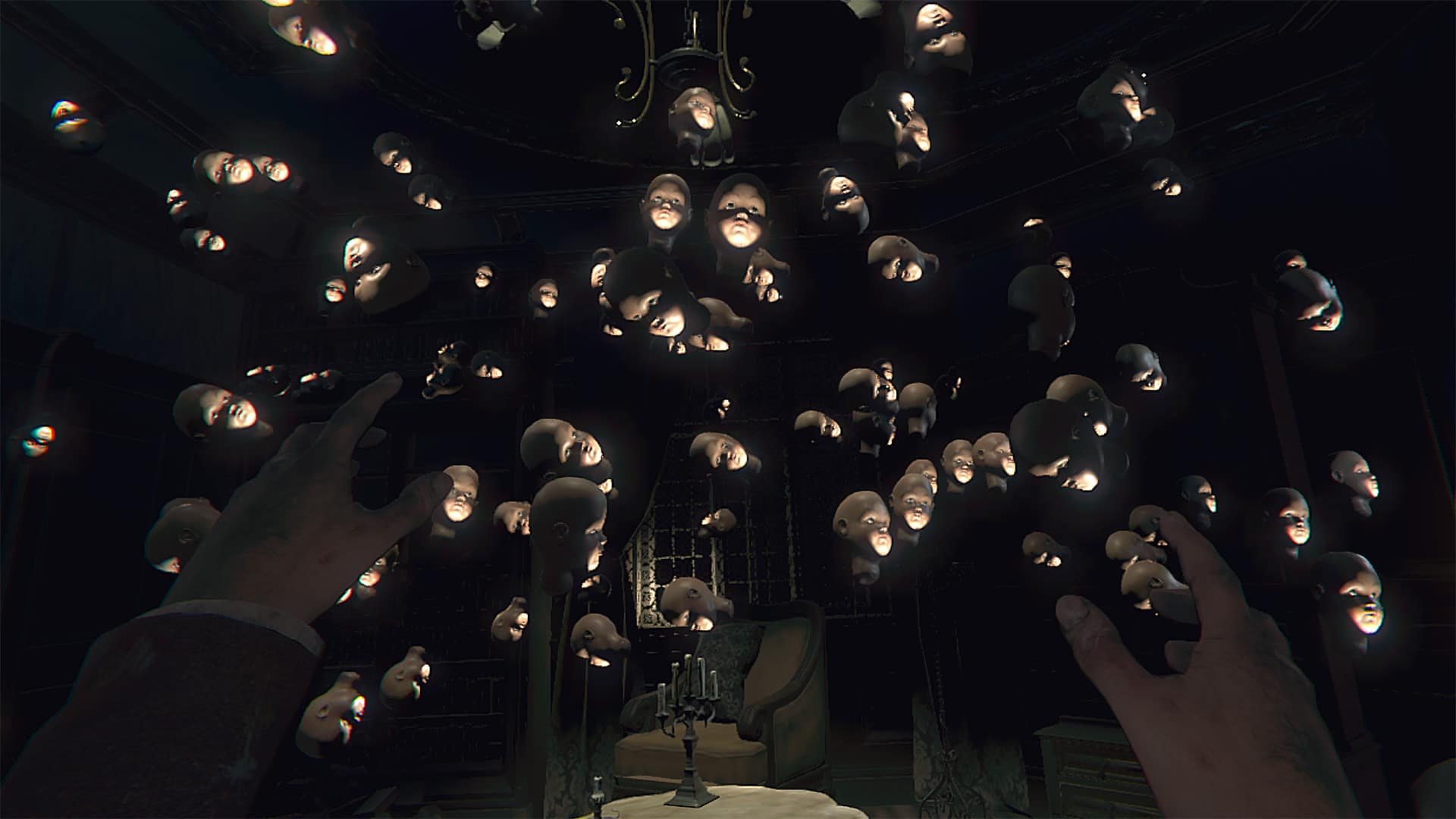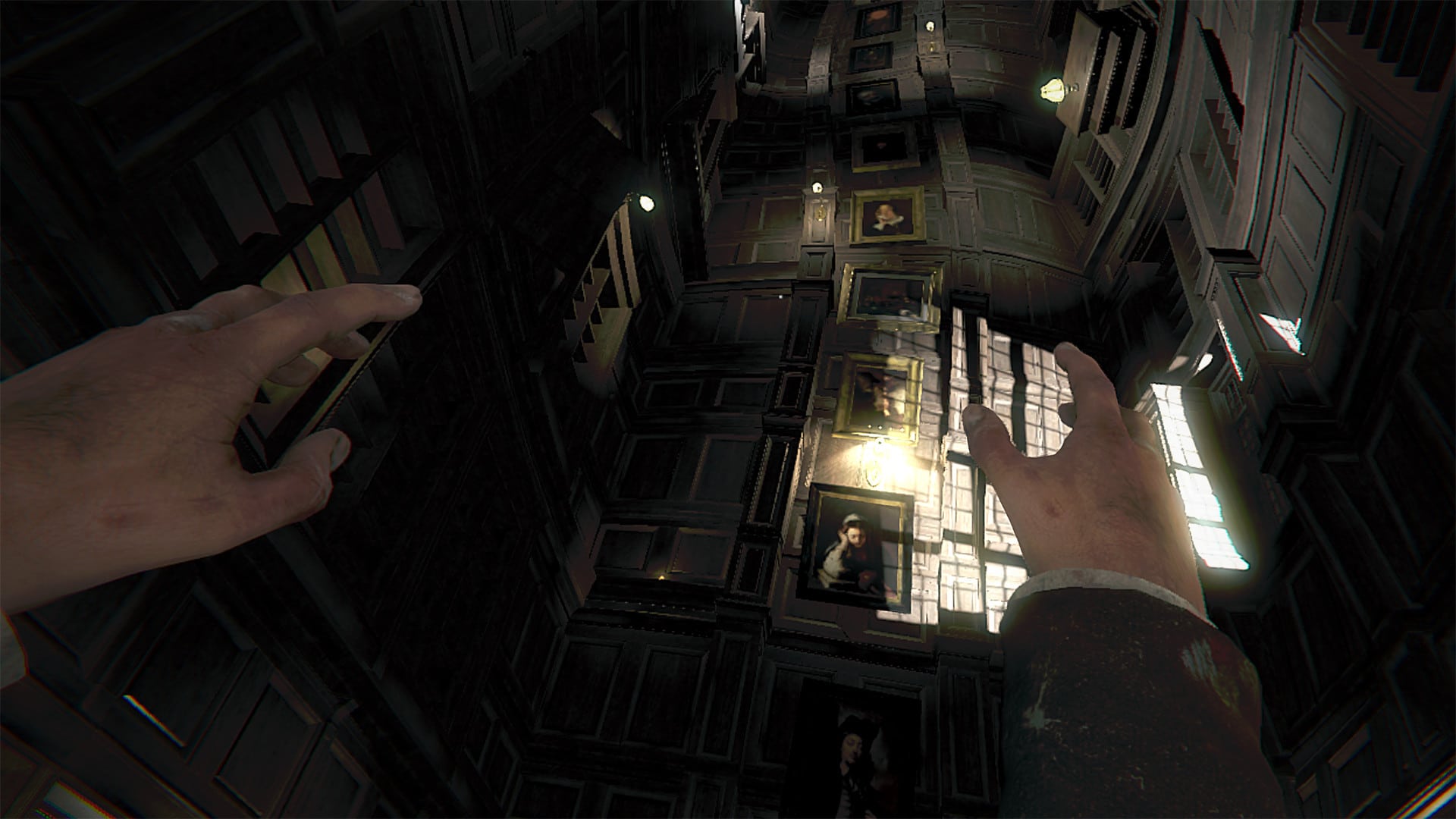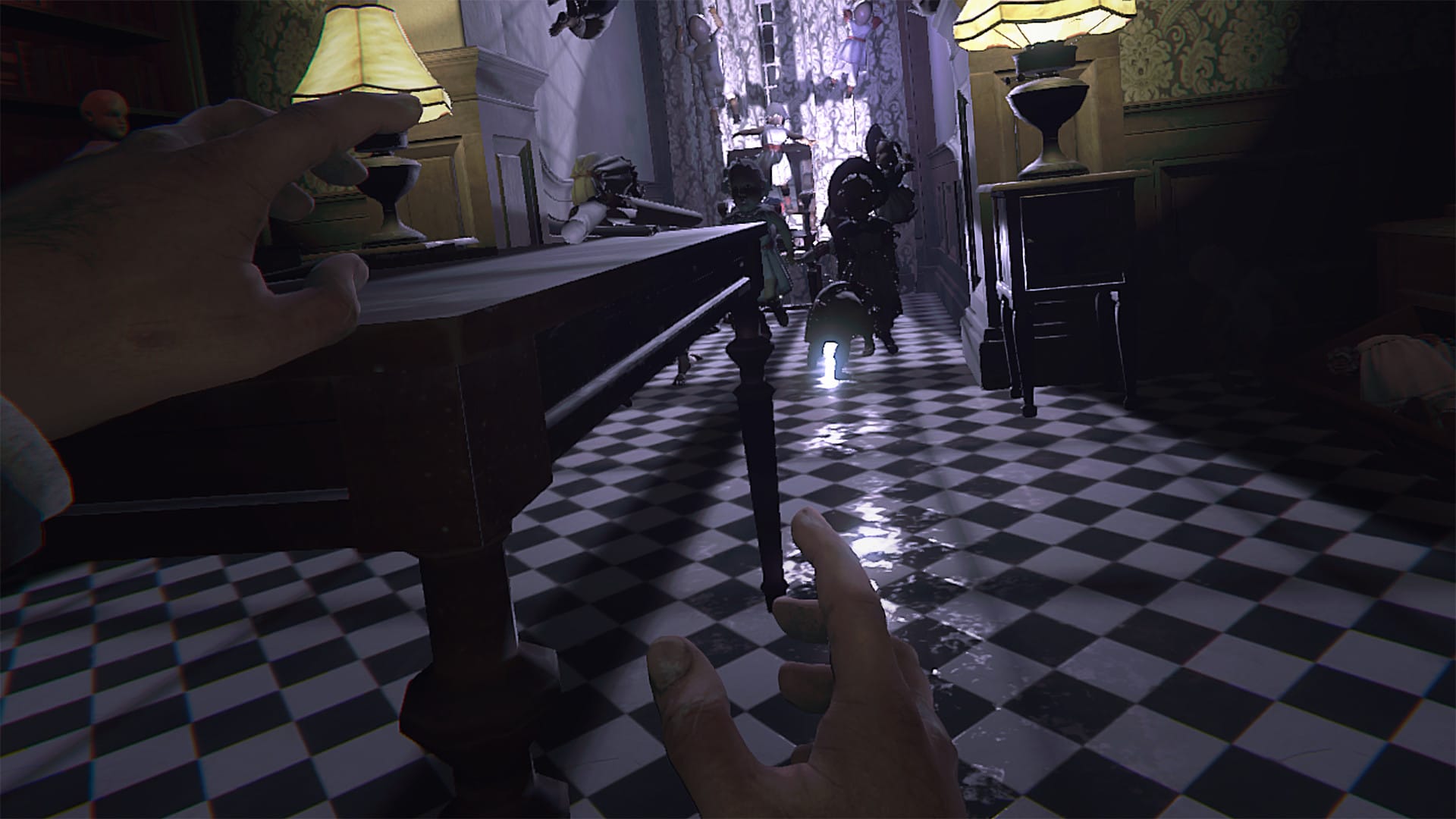Layers of Fear VR released late last year, but we didn’t get the chance to review it at the time. Now that the VR world has settled down post-Half-Life: Alyx, we thought we would check it out.
Much like horror in cinema, the best kind of horror in VR is when there’s a mixture of tension, suspense, gripping narrative with deserved jump scares, and truly frightening moments. It’s often when one or more of those elements is missing, or executed poorly, that you’re left with something quite disappointing. Sadly, amidst many other problems, Layers of Fear VR is missing some of those elements entirely while also failing to successfully execute a lot of the elements that it does have.
Layers of Fear VR is a VR port of a PC and console game titled, as you might have guessed, Layers of Fear. The original released in 2016 and has since received a sequel that released last year. Layers of Fear first came to VR on the Google Daydream in the form of an abridged and heavily modified version, Layers of Fear: Solitude. However, Layers of Fear VR marks an attempt to bring the full original game to VR for the first time.
Committing Cardinal VR Sins
To call Layers of Fear VR a port would be generous. There were truly very few changes to accommodate for the drastic shift in medium, and it feels more like a fan-made VR mod than something produced by a studio. The game’s mechanics have barely been translated into VR and what you wind up with is absolutely dreadful VR implementation with incredibly clunky mechanics.
There are several quirks and oddities with the VR interactions, such as when you move your head too close to a wall or object, the engine will sometimes produce forced artificial backwards movement, presumably to prevent you from moving into the object. Any item you pick up lacks any gravity – dropping an item will see it float back to its original position, lacking any sense of physicality. Plus, you’ll also often get stuck on even the smallest of obstacles on the ground while moving through an environment. These are just a few examples.
Converting the UI to work in VR is an afterthought. Stored items and subtitles sit obnoxiously at the bottom of your field of a view, in a position that never quite feels comfortable.
But perhaps worst of all, the game frequently uses visual distortion and effects that are both unnecessary and likely incredibly nauseating to anyone who is susceptible to motion sickness. The effects vary, but will do thing like warp your entire field of view, quickly shift your field of view back and forth between two positions, and use sudden disorientating movement from one position to another.
These effects cannot be turned off, and they feel aggressively out of place in a VR game. It is a baffling decision, seemingly taken from the original and not modified at all, that will only serve to nauseate many people.
There’s also very little in the way of comfort options. Continuous movement is the only movement method, accompanied by some basic tunneling toggles in the menu to allow for FOV dimming, which helps with nausea a small amount. However, even with tunneling turned on, there’s something about Layers of Fear VR’s movement that I found particularly uncomfortable, more so than other games. I consider myself to have relatively strong VR legs, but the combination of odd quirks and bugs with the VR implementation, along with the obnoxious effects and the movement system made me feel very nauseous, to the point where I had to take frequent breaks to make it through to the end.
A Tortured Artist
All of these problems with the VR translation and implementation don’t set a very good baseline for the game, and sadly the story and gameplay aren’t overly compelling either.
The story that Layers of Fear tries to paint is one of an artist who is haunted by the memories of his past as he explores his family’s mansion while trying to work on a new masterpiece. But your journey through the house becomes a horror labyrinth, haunted by the man’s family. You’ll move from room to room, collecting significant artifacts and objects to learn more about his fall from grace and the failing relationship he had with his wife and daughter. It’s clear that 2018’s Rise of Insanity (which is available in VR as well) took some heavy cues from Layers of Fear when it originally released.
It’s a pretty stock standard story, which is delivered mainly through dull and uninspired voiceovers and subtitled sequences that restrict your movement entirely while they play out. In terms of gameplay, you will spend 80% of your time walking down empty corridors and checking if a door is locked or not. The other 20% are puzzles, which usually consist of just finding an object in a room, with a few unremarkable exceptions.
The game does do some interesting things with your field of view and playing with the environments according to where you’re looking. Sometimes you’ll reach a dead end, turn around to double check if you missed something, only to find that the environment behind you has changed entirely. It’s a neat, if not very original, trick that’s fun when it works. These dynamic and trippy environment changes are perhaps one of the better parts of the game overall.
When it comes to the game’s horror, the quality is all over the place. The opening hour or so of the game is mainly cheap jump scares and the rest of the game mixes those with sequences that are a bit more suspenseful, with some grotesque imagery mixed in. There are some genuinely interesting horror set pieces, but by the time the game gets to them it’s way too late. The better horror sections come in the latter half of the game, but by that point, my patience had worn thin.
Each of the game’s entertaining sections are buffered by too many filler corridors and rooms that start to look the same and don’t feature anything vaguely interesting within them. The game isn’t that long to begin with, around 2-3 hours total, but the dull areas between well-crafted set pieces make it feel much longer.
While there’s a somewhat interesting conclusion to the game’s paper-thin storyline, the entire ending reveal plays out as a cutscene on a 2D screen suspended in a black void, ripped straight from the original game. It’s still from the point of view of the game’s protagonist, but isn’t in VR at all, then you’re suddenly thrust back into VR to play out the last minute of the ending. It’s a disgustingly inappropriate note to end the story on, but also encapsulates the problems that plague the game from start to finish.
Layers of Fear VR Review Final Verdict
The saddest part about Layers of Fear VR is that there’s nothing overly redeeming or good enough in the game’s content to overcome the horrible VR implementation and mechanics. If the meat of the game and story featured something more compelling, then perhaps it would be worth pushing through the stodgy VR, but that isn’t really the case here. Other than some good visual effects, powerful horror set pieces, and a few solid jump scares, it’s just not worth considering.
If you still want to play Layers of Fear VR for the story and the horror set pieces, you’re probably better off just playing the original flatscreen version on PC or consoles. At least then you’ll be playing a game that was designed for the platform you play it on, as opposed to a port that was haphazardly thrown together with seemingly no care or respect for the work required to make a successful translation between two very different mediums. If you’re a hardcore horror fan with an iron stomach desperately looking for 2-3 hours of content to whet your appetite, there’s something here for you, but otherwise I’d recommend looking elsewhere. There are far better VR horror games out there. Layers of Fear VR may technically be a horror game, but the scariest part is the dismal missteps made in bringing the game to a VR platform.
Final Score: 
 | 2/5 Stars | Disappointing
| 2/5 Stars | Disappointing

You can read more about our five-star scoring policy here.
Layers of Fear is available for PC VR on Steam and the Oculus Store for $19.99. This review was conducted on the Steam version of the game via Oculus Link using an Oculus Quest.




























